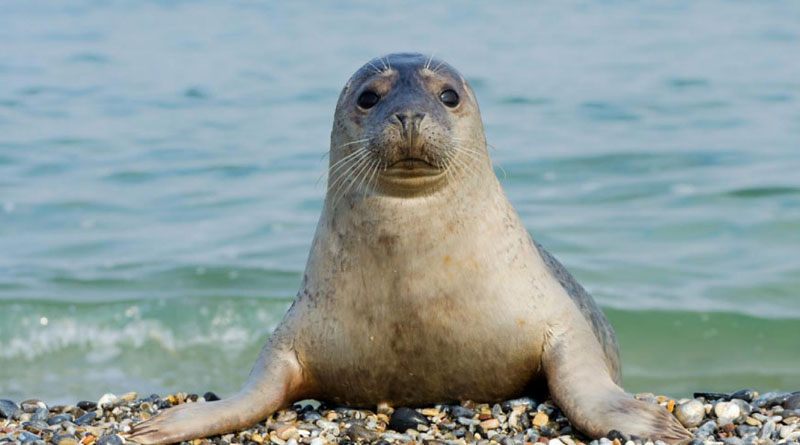Caspian seal rookeries are disappearing in the Caspian
Over the past 20 years, the number of Caspian seals has declined by 4 times, and over the century – by 10 times. Moreover, the researchers have not been observing these animals on their constant haul-out sites. This has been reported by Mirgaliy Baimukanov, Director of the Institute of Hydrobiology and Ecology (Irgely, Kazakhstan), to the correspondent of Kursiv.kz.
In the mid-80s of the last century, researchers discovered a large rookery of Caspian seals on the islands near the Kenierli Spit in the Kazakh Bay. By the way, this rookery was the only one in the Middle Caspian.
‘For a number of years, we observed the4 rookery, received good data on the life, number of seals, and hoped that we could save it by joint efforts. In 2009, we counted up to 700 individuals there, in 2016 there was a maximum of 500 seals, a year later only a few dozen. And in the autumn of 2018, we could not find a single seal. In our opinion, this is a very disturbing sign. The situation is catastrophic, not only in the Kendirli rookery, but in the entire Kazakhstan part of the Caspian Sea,’ says Mirgaliy Baymukanov, Director of the Institute of Hydrobiology and Ecology.
Seals have used the Kendirli Islands for moulting and resting in spring and autumn for many years. A sharp decline in the number of seals in this place is associated by scientists, above all, with the increase in poaching. These animals were likely to leave the islands due to the noise of motor boats, fishing nets set up near the islands, rifle shooting, and sturgeon poaching. There are various reasons for the disappearance of seal rookeries in other islands.
‘In 2011, about 30 thousand Caspian seals were observed on Durneva Island. But five years later, their number became much smaller. We attributed this to the fact that there was a drop in the Caspian Sea level, and it became difficult for animals to get closely to the islands. Last year, we did not meet a single seal there, and there were not even traces of them,’ notes Mirgaliy Baimukanov, Ph.D.
A critical situation has developed on Kulaly Island. Here, researchers have visited twice in the past two years, not finding any animals.
‘A gradual decline in seal numbers has been going on for many years. In 2005, an international team of Caspian seals researchers counted about 100 thousand individuals. Then there were surges in increasing their numbers. But with such a dynamic, when the trend goes down, this is random, not natural,‘ the researcher says.
Among the reasons for the disappearance of seals, scientists emphasise the influence of icebreakers. In the Northern Caspian, these ships pass along rookeries that exist on ice during the breeding season.
‘There are scientific researches proving that icebreakers collide with animals in this part of the sea, and this leads to death, as well as to the separation of puppies from their mother-seals. This is a huge risk factor,’ said M. Baymukanov.
The Institute of Hydrobiology and Ecology and the Kazakh Research Institute of Fisheries have conducted research on the identification of seal rookeries in the Kazakhstan sector of the Caspian Sea since 2015. Our results are disappointing: the number of secluded and safe places for seals becomes less and less in the sea, and soon the rookeries may disappear at all.
‘We plan to carry out the next studies in spring and autumn of 2019. It is necessary to clarify the situation as soon as possible. Has the Caspian seal number become critically short, or have the animals moved to some new islands?’ the scientist comments.
Source: Kursiv – the business .news of Kazakhstan.

